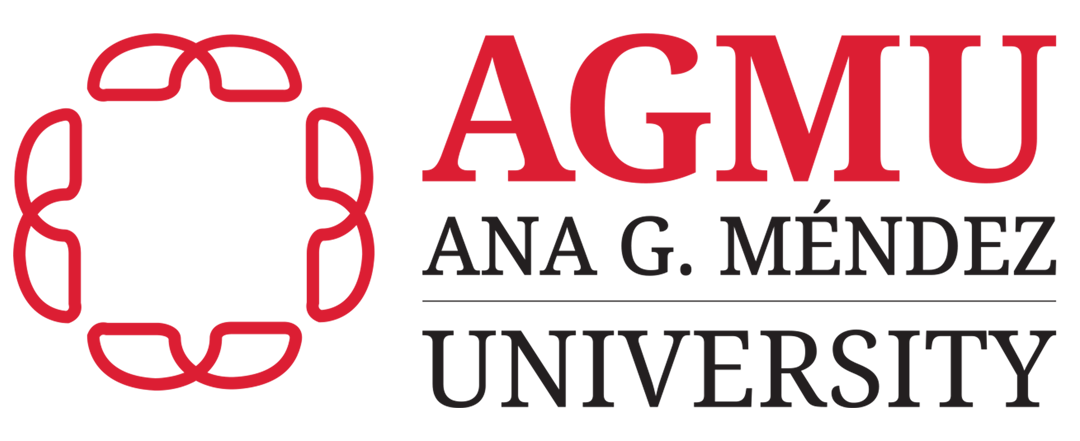Research Problem
Institutions of higher education are seemingly aware of the many changes in the student population. Students come from different cultural, linguistic, and educational backgrounds, forcing faculty and the institution to align with students’ needs and expectations. However, the lack of professional development in this area affects faculty’s ability to perform effectively in the classroom. Other factors that impede faculty’s abilities in the classroom are related to what they bring into the school, such as teaching philosophy, cultural and ethnic identities, and personal experiences. Students’ success in the classroom is dependent on the results of all of these factors.
How educators act and think of themselves, their personal and pedagogical abilities regulate their actions within the classroom (Mohamadi, Asadzadeh, Ahadi & Jomehri, 2011). Social cognitive theory establishes that educators who think they will be unsuccessful with certain student population will put less effort into planning and delivery of instruction even though they are well prepared to meet the expectations (Mohamadi et al., 2011). Self-efficacy, or the beliefs of our own abilities, is part of faculty teaching competency levels. Higher levels of self-efficacy produce student motivation and positive learning experiences and academic progress.
Purpose and Research Questions
During the academic year, faculty in higher education must carry out an infinite number of tasks, including research endeavors, institutional requirements, and professional development. However, within these requirements the idea of self-efficacy and how to achieve it is not addressed in many of these areas and responsibilities. The purpose of this paper is to understand how self-efficacy affects negatively or positively faculty’s performance; the following research question are presented:
- How does self-efficacy help faculty to carry out educational and institutional challenges?
Social Learning Theory
Albert Bandura’s social learning theory (SLT) is one of the most significant educational theories. Still, it is also present in social and health sciences and business administration. Thomas (2005) presents SLT as a continuation of early social cognition theorists such as B.F. Skinner’s operant behaviorism and behaviorist models from the 1960s and ’70s. Early behaviorists emphasized experimental methods and observable variables, avoiding studying anything subjective, internal, and unavailable (Boeree, n.d.). However, Bandura realized this perspective missed an essential aspect of behavior learning: the environment. Bandura’s SLT emphasized the effect social influence has on behavior and personality and how cognition plays a role in this process (Thomas, 2005). In the mid-1980’s SLT was changed to social cognition theory, or SCT (Thomas, 2005). His research was rooted then on the idea that human beings not only “learn (acquire information from social experiences), but they also manipulate knowledge in their minds to form new understandings, they imagine what may happen in the future, and they generate plans” (Thomas, 2005, p. 149).
SLT assumes that behavior is learned through interactions with others, and this observation, behavior can be imitated (Tadayon, 2012). SLT, like Skinner’s operant behaviorism, also believes that imitated behavior happens imminently when rewarded. Bandura’s most important discovery of how behavior is learned and modeled was through the Bobo doll experiments (Boeree, n.d.). In the study, Bandura recorded a woman punching an inflatable clown aggressively. He then showed the recording to a group of children with the sole purpose of knowing how they would react once they were left alone with the Bobo doll. As expected, the children responded aggressively to the doll, just as the lady did previously (Boeree, n.d.). SLT has three essential principles on learning behavior (Tadayon, 2012):
- Through imitation,
- Observation, and
- Modeling
Even though behavior can be reinforced or changed entirely, Bandura’s SLT emphasizes that learned behavior doesn’t have to necessarily show during a performance or result in a change of behavior. SLT focuses on intrinsic reward as a motivator to reinforce behavior. Therefore, learning happens when internal thoughts and cognition processes are encouraged by pride, satisfaction, and a sense of accomplishment (Tadayon, 2012).

Self-Efficacy and Faculty Performance
SLTconceives learning as a cognitive processwhere people use learned behavior to guide future decisions about “what response will be more appropriate to fulfill needs and obtain rewards” (Thomas, 2005, p. 156). However, Bandura focused on the self-efficacy component of social cognition. Self-efficacy is the “belief in one’s capabilities to organize and execute the courses of action required to produce given attainments” (Thomas, 2005, p. 156). In other words, the success of achieving a goal is dependent on the level of confidence the person has in him/herself. Self-efficacy then affects performance and behavior in all settings (Thomas, 2005). It is dependable of observational learning and the level of consequences. Individuals acquire self-efficacy by comparing their performance with others, vicariously or through direct observation (Thomas, 2005; Mohamadi et al., 2011).
Research has suggested that educators’ self-efficacy levels impact students’ performance (Shahzad & Naureen, 2017). When self-efficacy is applied to teaching, it focuses on “the ability to determine the outcomes of student work” (Shahzad & Naureen, 2017, p. 49); when faculty lack self-efficacy, they are considered incompetent due to their low self-esteem and low confidence (Shahzad & Naureen, 2017). Mohamadi et al. (2011) present three sources of self-efficacy for teachers; a) mastery experience, or the achievements acquired in the past, b) vicarious experience, or the observations of the achievement of others, c) verbal persuasion; “the verbal interactions that a teacher receives about his or her performance and prospects for success” (Mohamadi et al., 2011, p. 427), and d) the emotional and physiological state such as stress and anxiety can affect an individual’s self-efficacy (Mohamadi et al., 2011).
Even though there is a concern of the effect of self-efficacy in education, there is little research on university faculty and self-efficacy. Ismayilova and Klassen (2019) state that in higher education settings, faculty members are evaluated on different components such as investigation, publications, and services rendered. However, teaching is not assessed with such high considerations (Ismayilova & Klassen, 2019). Ismayilova and Klassen’s (2019) study explored a group of 528 faculty members’ self-efficacy concerning research and teaching. The results demonstrated a direct correlation between teaching self-efficacy and job satisfaction. Faculty presented higher self-efficacy in teaching but overall low self-efficacy in research endeavors.
Interestingly, the results also showed that “workload and reward structures were de-motivating and lowered self-efficacy, and especially, job satisfaction” (Ismayilova & Klassen, 2019, p. 65). Both affect their job satisfaction overall. In this study participants reflected on verbal persuasion as the best way an institution can increase self-efficacy. In Vera, Salanova and Martin del Rio (2011) 166 faculty members’ job profiles were analyzed. The researchers discovered that job satisfaction is also correlated with self-efficacy. In this study specifically, there is a relationship with the level of education and self-efficacy in the areas of teaching and research; the higher the level of education, higher the level of self-efficacy (Vera et. al, 2011). In Yuner (2020) 322 prospective teachers participated in a quantitative study to examine the relationship between academic self-efficacy, academic motivation and academic performance. The study found that intrinsic (feeling of happiness and satisfaction when the behavior is performed), external (behavior is regulated through external interventions such as rewards or sanctions), and academic self-efficacy align with motivational levels; the lower self-efficacy in these three types of motivations the lower job satisfaction and performance.
Conclusion
Higher education settings are focused on becoming more competitive, not only in research endeavors but also in becoming more culturally diverse. Therefore, faculty must demonstrate proactiveness in teaching diverse populations. However, institutions seem to ignore the importance of self-efficacy and how to improve it. In this paper, Bandura’s SLT component of self-efficacy was analyzed and examined in university faculty. Self-efficacy: “the confidence people hold about their capability to carry out a particular course of action successfully” (Ismayilova & Klassen, 2019, p. 56). The investigations presented showed a correlation between job performance and satisfaction. The lack of research on how self-efficacy empowers faculty only shows that higher education institutions must provide faculty opportunities to improve self-efficacy. The discussion of self-efficacy can also help institutions maintain faculty engaged with classroom responsibilities, resulting in motivated learners.
References
Boeree, G. (n.d.). Albert Bandura. Personality Theories. Shippensburg University.
https://webspace.ship.edu/cgboer/perscontents.html
Ismayilova, K., & Klassen, R. M. (2019). Research and teaching self-efficacy of university
faculty: Relations with job satisfaction. International Journal of Educational
Research, 98. 55–66. https://doi-org.ezproxy.lib.uwf.edu/10.1016/j.ijer.2019.08.012
Mohamadi, F., Asadzadeh, H., Ahadi, H. & Jomehri, F.(2011). Testing Bandura’s theory in
school, Procedia Social and Behavioral Sciences, 12. doi:10.1016/j.sbspro.2011.02.053
Shahzad, K. & Naureen, S. (2017). Impact of teacher self-efficacy on secondary school students’
academic achievement. Journal of Education and Educational Development, 4(1).
Tadayon, R. (2012). Bandura’s social learning theory and social cognitive learning theory.
https://www.researchgate.net/publication/267750204_Bandura’s_Social_Learning_Theory
y_Social_Cognitive_Learning_Theory
Thomas, R. (2005). Comparing theories of child development. Cengage Learning.
Vera, M., Salanova, M., & Martin del Rio, B. (2011). Self-efficacy among university faculty:
How to develop an adjusted scale. Anales de Psicología, 27. 800-807.
Yuner, B. (2020). Investigation of the relationship between academic self-efficacy, academic
motivation and success: The case of prospective teachers. Cukurova University Faculty of Education Journal, 49(2), 706–733. https://doi-org.ezproxy.lib.uwf.edu/10.14812/cufej.698312
Sharon Diaz, M.A.E.E., Ed.S., Ed.D. candidate
Assistant Professor of English
AGMU Main Campus
Professor Sharon Diaz is an Assistant Professor of English at AGMU. Currently a doctoral candidate at the University of West Florida in Instructional Design and Online Learning, she holds degrees in English, Literature, and Linguistics from the University of Puerto Rico. Her research centers on English Language Learners, culturally relevant texts, and critical theory, focusing on poetry as a teaching artifact. Professor Diaz has published in peer-reviewed journals, including NABE and CEA.

